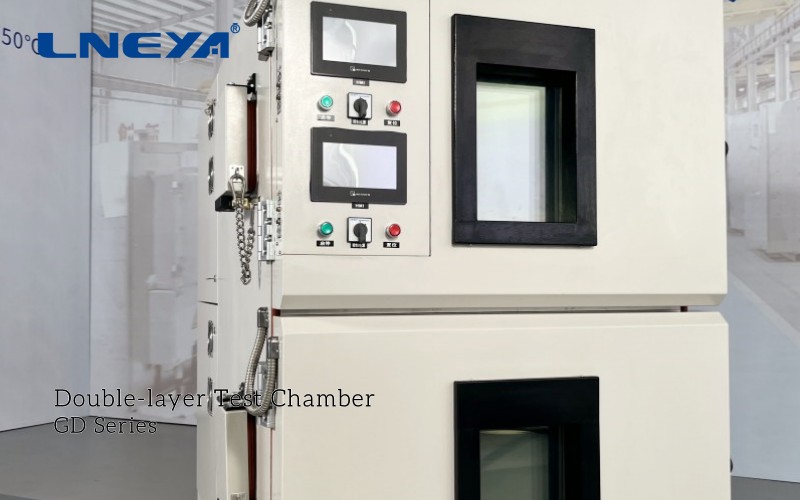Por qué los ensayos de chips necesitan enfriadores de semiconductores
Cada microchip recorre un largo camino antes de llegar a un teléfono, un coche o un dispositivo médico. El proceso no termina tras la producción. Cada chip se somete a estrictas pruebas para demostrar su fiabilidad y rendimiento. Sin pruebas, ninguna fábrica puede ofrecer productos que cumplan las normas de velocidad, potencia y seguridad que esperan los clientes.
El control de la temperatura se sitúa en el centro de las pruebas de chips. Las diminutas estructuras del interior de las obleas reaccionan instantáneamente al calor. Incluso un pequeño cambio de grados puede provocar errores en las mediciones, falsos fallos o, peor aún, que los chips pasen la prueba pero fallen en el uso real. Para solucionarlo, las fábricas recurren a enfriadores de semiconductores. Estos sistemas mantienen las condiciones de ensayo estables, precisas y repetibles.
¿Qué es el Chip Testing?
Prueba de chipsLa prueba de circuitos integrados es el paso en el que cada circuito integrado se verifica en diferentes condiciones de funcionamiento. Se comprueba si el chip funciona de acuerdo con su diseño antes de salir de fábrica.
Las pruebas pueden realizarse a nivel de oblea o después. envasado. En el sondeo de obleas, se comprueban en paralelo cientos de chips de una oblea. Tras el empaquetado, los dispositivos se vuelven a probar para confirmar que el paquete no ha introducido defectos.
Durante estas etapas, los ingenieros aplican patrones de voltaje, corriente y señal mientras supervisan la respuesta del chip. También someten al dispositivo a variaciones de temperatura, cargas de trabajo elevadas y cambios de voltaje. El objetivo es descubrir los puntos débiles antes de que el chip llegue al cliente.

Los proyectos clave en la prueba de chips
Las pruebas de chip abarcan muchas áreas. Algunas de las más comunes son:
• Pruebas funcionales: ¿Hace el chip lo que se pretendía con el diseño? Esta prueba realiza operaciones lógicas, comprobaciones de memoria y análisis de temporización.
• Pruebas paramétricas: Los ingenieros miden propiedades eléctricas como la resistencia, la capacitancia y las fugas. Estas cifras revelan si el chip cumple las especificaciones.
• Pruebas de rodaje: Los chips funcionan a altas temperaturas y voltajes durante horas o días. Así se simulan años de uso real en poco tiempo.
• Pruebas de estrés ambiental: Aquí, los chips se enfrentan a ciclos extremos de frío y calor. Esto demuestra que pueden sobrevivir a aplicaciones de automoción, aeroespaciales o industriales.
Todos estos proyectos comparten una cosa: el control de la temperatura. Sin un sistema de refrigeración fiable, los resultados son inconsistentes. Ahí es donde entran en escena los enfriadores de semiconductores.

Why Chip Testing Needs Semiconductor Chillers?
Un refrigerador puede parecer una caja más en la planta de producción, pero en las pruebas de virutas es esencial.
Control de la temperatura
El calor es inevitable. A medida que los chips procesan señales, generan calor. El propio equipo de pruebas también añade más calor. Si la placa de pruebas se calienta, el chip sometido a prueba deja de ver las condiciones que los ingenieros pretendían. Los números dejan de ser fiables.
Simulación del mundo real
Chips must face real-world temperatures. A phone processor might need to work at -20°C on a winter morning or 45°C inside a hot car. Los refrigeradores permiten a los sistemas de ensayo oscilar entre estos puntos con gran precisión. Sin ellas, las pruebas de resistencia no pueden simular casos de uso reales.
Alta precisión
Imagine a test where the setpoint is 25°C, but the actual temperature drifts by 2°C. That tiny swing may cause the chip to fail in the lab even though it would work in the field—or worse, pass in the lab and fail later in a customer’s hands. Chillers stop that drift by holding temperature within fractions of a degree.
Fiabilidad
Probar cientos de obleas cada día es caro. Si el equipo se sobrecalienta o proporciona datos incoherentes, la producción se ralentiza y el rendimiento disminuye. Un enfriador de semiconductores bien diseñado mantiene las líneas en movimiento, los resultados precisos y los índices de desechos bajos.
How to Select a Semiconductor Chiller for Chip Testing?
No todos los sistemas de refrigeración están preparados para las pruebas de chips. Los ingenieros deben encontrar un equilibrio entre velocidad, precisión y fiabilidad a la hora de elegir.

Rango de temperatura
Las pruebas suelen llevar a los chips a situaciones extremas, desde mínimos criogénicos hasta máximos abrasadores. Un refrigerador capaz puede oscilar entre -80 °C y +200 °C y pasar de un punto a otro sin retardo.
Precisión
Un sistema que se mantiene estable dentro ±0.02°C garantiza que los resultados sean coherentes y reproducibles, en lugar de desviarse con cada ciclo.
Capacidad de refrigeración
Una instalación de sobremesa puede consumir sólo unos pocos kilovatios, mientras que una cámara de rodaje pueden exigir mucho más. Adaptar la potencia de refrigeración a la carga real evita interrupciones en las pruebas.
Velocidad de respuesta
Cuando las condiciones cambian, el sistema debe aumentar o disminuir rápidamente. Las transiciones lentas hacen perder tiempo y crean cuellos de botella. Los modelos avanzados gestionan con facilidad las oscilaciones bruscas de calefacción y refrigeración.
Conectividad
Los refrigeradores modernos se conectan directamente a los probadores de obleas y a los equipos de ensayo automatizados. Protocolos como RS-485 o Ethernet permiten una comunicación fluida y mando a distancia.
Fiabilidad
Fábricas de semiconductores funcionan las veinticuatro horas del día, por lo que las averías se traducen en pérdidas reales. Elegir equipos con un tiempo de actividad probado, un servicio accesible y una larga vida ayuda a garantizar los objetivos de producción.
Para las fábricas de vanguardia, opciones como enfriadores de recirculación, refrigeración en cascada, o chiller heater systems ofrecen la flexibilidad necesaria para programas de pruebas diversos y exigentes.
Conclusión
Para las fábricas, elegir el enfriador de semiconductores adecuado es tan importante como elegir el comprobador o la tarjeta de sondas adecuados. Si su equipo está planificando nuevas líneas de prueba o se enfrenta a problemas de estabilidad con las configuraciones actuales, puede que haya llegado el momento de actualizarlas. Nuestra enfriadores de semiconductores están diseñadas para ofrecer precisión, respuesta rápida y funcionamiento ininterrumpido en fábricas exigentes.
Reach out today and let’s discuss how the right chiller can support your chip testing goals.

- What Does a 200 Ton Chiller Cost
- Temperature Control in Photolithography
- Is a Used Chiller a Good Idea
- Chiller Components and Refrigeration Fundamentals Guides
- Chiller Types and Selection Guides
- How Does a Peltier Cooler Work
- Peltier Chiller vs. Compressor Chiller
- What Is a Peltier Chiller
- diciembre 2025
- noviembre 2025
- octubre 2025
- septiembre 2025
- agosto 2025
- julio 2025
- junio 2025
- mayo 2025
- marzo 2025
- febrero 2025
- enero 2025
- diciembre 2024
- noviembre 2024
- octubre 2024
- septiembre 2024
- agosto 2024
- julio 2024
- junio 2024
- mayo 2024
- abril 2024
- marzo 2024
- febrero 2024
- septiembre 2023
- julio 2023
- junio 2023
- mayo 2023
- enero 2023
refrigerador por aire enfriadora Instalación de enfriadoras Chiller Maintenance chiller refrigerant refrigeradores Montaje en frío Congelador enfriador de refrigeración refrigeración calefacción cooling system sistema dinámico de control de la temperatura chiller de bajo consumo energético enfriador a prueba de explosiones congelador circulador de calefacción enfriadora industrial enfriadoras industriales refrigeración industrial congelador industrial frigorífico industrial reactor de camisa refrigerador de laboratorio refrigerador de baja temperatura noticias enfriador de aceite enfriador de proceso enfriamiento de procesos reactor enfriador refrigeración del reactor refrigeración del reactor calefacción reactor calefacción refrigeración circulador refrigerado refrigerador de tornillo enfriador de semiconductores enfriador de pruebas de semiconductores sundi tcu control de temperatura cámara de pruebas termostato refrigerador de ultra baja temperatura enfriador de pruebas de vehículos enfriador de agua refrigerador por agua
Enfriadores relacionados
CONTÁCTANOS
TEL:
EMAIL:
WeChat & WhatsApp:

Wechat QR

¿Tiene alguna pregunta o necesita un presupuesto? Complete el formulario a continuación y nuestro equipo se pondrá en contacto con usted en 24 horas.
 LNEYA Enfriadoras industriales Fabricante Proveedor
LNEYA Enfriadoras industriales Fabricante Proveedor
















